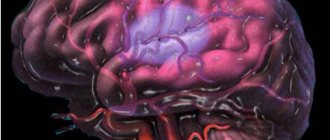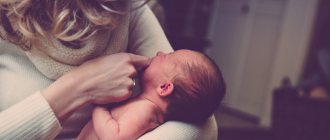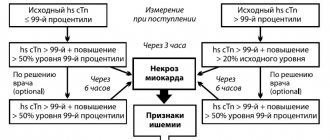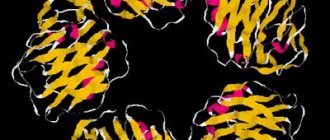Synonyms: C-reactive protein, CRP, CRP
C-reactive protein is a blood component that provides the body's primary response to tissue damage and inflammation. This is a fast phase protein; it only stimulates the immune response to the pathological process. Therefore, CRP is usually not detected in the blood of a healthy person.
A blood test for CRP allows you to determine the presence of the disease and determine the stage and severity of its course. Also, based on the results of this study, specialists evaluate the effectiveness of the prescribed course of therapy, which makes it possible (in the absence of positive dynamics) to promptly change the treatment regimen.
General information
CRP is produced in liver cells (hepatocytes) immediately after damage has occurred, the provoking factors of which can be bacteria, fungi, antigens, various immune complexes, etc.
The level of C-reactive protein directly depends on the type, form (acute, chronic), stage and activity of the disease. Within the first 4-6 hours after cell damage, active synthesis of CRP begins, and after a day its density increases exponentially.
With early diagnosis of the disease and timely treatment, within a few days the analysis will show a decrease in the concentration of CRP. The indicator will be completely reset only 1-2 weeks after the start of conservative therapy.
Chronic pathologies are characterized by an undulating course; accordingly, CRP will increase during the period of exacerbation and independently decrease during remission (subsidence of clinical symptoms).
A biochemical blood test with determination of CRP values makes it possible to distinguish a bacterial disease from a viral, fungal or parasitic one. It is known that in case of viral pathology, CRP does not increase much, but in the case of a bacterial infection it can increase several times. Also, a high concentration of C-reactive protein may indicate malignancy, injury, or necrosis (death) of tissue.
CRP analysis plays an important role in the diagnosis of atherosclerosis. If the level of protein in the plasma increases, then we can talk about the pathology of the vascular walls and the onset of the inflammatory process. Additional diagnostics will reveal what kind of disease is developing: stroke or heart attack, coronary artery disease, hypertension, atherosclerosis, etc.
In newborns, liver function is insufficient, so the level of C-reactive protein may not increase even during acute inflammatory processes and sepsis (blood infection). Antibacterial treatment in infants should be initiated when CRP concentrations exceed 12 mg/L.
How to prepare for a CRP test
The research material in this case is venous blood. The collection is carried out by venipuncture. The patient is recommended to visit the laboratory in the morning, on an empty stomach. The last meal should be 8-10 hours before the appointed time.
Other requirements are the same as for similar procedures:
- exclusion from the diet of fatty, salty, spicy foods the day before the examination;
- inadmissibility of drinking alcohol several days before the study;
- prohibition on physical activity the day before;
- the need to avoid severe stress, hypothermia and overheating.
The day before and on the day of the procedure, you should not take any medications, nor drink water, tea, coffee, juice or other drinks in the morning. Blood sampling from a vein must be carried out before other studies - fluorography, ultrasound, x-rays, etc.
Indications
A referral for the determination of C-reactive protein can be carried out by an immunologist, infectious disease specialist, internist, pediatrician or general practitioner.
- Prof. examinations of workers of social institutions.
- Comprehensive examination of people of older age groups.
- Analysis of the state of the cardiovascular system after coronary artery bypass surgery.
- Monitoring the effectiveness of treatment of cardiovascular pathologies.
- Monitoring the condition of patients after angioplasty (an operation to restore the lumen of blood vessels).
- Differential diagnosis of inflammatory, bacterial, viral, fungal, parasitic and infectious diseases.
- Monitoring the effectiveness of antibacterial therapy.
- Monitoring the treatment of chronic diseases, preventing relapses.
- Diagnosis and treatment of cancer patients.
- Determining the risk of developing cardiovascular pathologies in diabetics, as well as patients with atherosclerosis and undergoing hemodialysis.
- Control of cardiovascular disease therapy with statins and aspirin.
Prices
| Name of service (price list incomplete) | Price |
| C-reactive protein (CRP) | 400 rub. |
In the body of every person, regardless of age, the liver produces a special compound called C-reactive protein (CRP). It helps fight infections and is involved in the healing process of injuries. When a person is healthy, the content of this protein in the blood is minimal or tends to zero. But as soon as a pathology develops in the body or an injury occurs, its concentration increases sharply after just six hours.
The C-reactive protein test is most often used to detect low-grade inflammation or infection in children that is difficult to detect by other methods. When uncontrolled, such pathologies lead to serious complications and affect the cardiovascular system. Therefore, it is so important to do timely analysis, identify the disease and carry out adequate therapy.
Normal value for C-reactive protein
- Normally, the concentration of CRP in a healthy person varies between 0-5 mg/l.
To assess the risk of developing cardiovascular pathologies, the following values can be used:
| Probability of development | SRP, mg/l |
| Low | less than 1 |
| Average | 1-3 |
| High | 3-10 |
| Dangerous (requires repeated examination for CRP and the appointment of additional diagnostic procedures) | more than 10 |
Benefits of analysis
The CRP test is the most sensitive and fastest method for detecting inflammation or damage. Its level rises even before the child feels the first signs of illness.
The dynamics of CRP in the body corresponds to the stage of development of the pathological process. That is, the more active the infectious or autoimmune process in the body, the higher the protein content in the blood. Therefore, this indicator is also called acute phase protein. As inflammation decreases, so does CRP levels. This allows you to monitor the course of the disease and evaluate the effectiveness of the developed therapeutic regimen.
Another important indicator of acute inflammation in the body is the erythrocyte sedimentation rate (ESR). These indicators are often compared, and the analysis of CRP is considered more effective. This is due to the fact that reactive protein in a child’s blood increases earlier than ESR, and decreases faster. This allows you to observe a more current picture of the course of the disease and take appropriate measures in a timely manner.
Interpretation of results
Normally, in the blood of a healthy person, C-reactive protein is completely absent or is in a negligible concentration.
Exceeding the norm of CRP may indicate the following pathologies:
- acute bacterial diseases (sepsis in newborns, tuberculosis);
- meningitis (inflammation of the soft tissue around the brain);
- postoperative complications (wound infection, sepsis);
- neutropenia (decrease in the concentration of neutrophils in the blood);
- tissue damage as a result of injury, surgery, burns;
- acute myocardial infarction;
- malignant processes in the body with metastasis;
- hypertensive crisis (a sharp increase in blood pressure to individually high levels);
- diabetes mellitus (increased blood glucose);
- hormonal imbalances (increased levels of the hormones estrogen or progesterone);
- systemic rheumatic pathologies;
- atherogenic dyslipidemia (low cholesterol levels with increased triglyceride levels);
- chronic cardiovascular pathologies (coronary heart disease, angina pectoris);
- relapse of infectious and inflammatory processes;
- transplant rejection reaction;
- secondary amyloidosis (disorder of protein metabolism).
It should be taken into account that the concentration of C-reactive protein differs significantly for different diseases.
- In case of viral pathologies, metastatic cancer (stage 4), as well as indolent rheumatic diseases, the protein level can be increased moderately - up to 30 mg/l;
- In case of recurrent chronic inflammatory diseases, bacterial infection, acute myocardial infarction, the concentration of C-reactive protein can be in the range of 40-100 mg/l. The same values are observed in patients in the postoperative period;
- Generalized infections, extensive burns, sepsis and other life-threatening and health-threatening conditions can give extremely high values - more than 300 mg/l;
An increased concentration of CRP in healthy people in the absence of complaints and clinical symptoms may indicate the development of oncology.
The role of CRP in the diagnosis of respiratory diseases
Russian professional communities developing clinical guidelines (which were mainly approved before 2020) include the determination of CRP level in the diagnostic standard and criteria for assessing the quality of medical care for a number of nosologies:
community-acquired pneumonia
(Russian Respiratory Society, 2021, project) [5]: it is recommended to study the level of CRP in the blood serum in all hospitalized patients, especially with an uncertain diagnosis of pneumonia (absence of inflammatory infiltration in patients with a characteristic history, complaints and local symptoms). At a concentration of more than 100 mg/l, the specificity of the test in confirming the diagnosis exceeds 90%, while at a concentration of less than 20 mg/l, pneumonia is considered unlikely. The level of CRP correlates with the severity of the disease, the prevalence of inflammatory infiltration and the prognosis of the disease. Determination of the level of CRP in the blood upon admission to the hospital, as well as a decrease in the level of CRP by more than 25% from the initial value at the time of discharge are criteria for the quality of specialized medical care for adults with pneumonia [5];
chronic obstructive pulmonary disease
(COPD) (Russian Respiratory Society, 2021) [6]: a study of CRP levels is recommended in patients with exacerbation of COPD to determine indications for antibacterial therapy (with CRP levels of 10 mg/l and above);
acute respiratory viral infection
in children (Union of Pediatricians of Russia, 2021 and 2021, project) [7, 8]: it is recommended to study the level of CRP in the blood serum to exclude severe bacterial infection in children at temperatures above 38 ° C, especially in the absence of a visible focus infections. It is emphasized that a CRP level above 30–40 mg/l is more typical for bacterial infections (diagnostic accuracy is more than 85%), however, even with an adenoviral infection, the CRP level can exceed 30 mg/l;
bronchitis
in children (Union of Pediatricians of Russia, 2021 and 2021, project) [8, 9]: indications for immediate testing of CRP levels (usually in a hospital setting) are fever over 39 °C with signs of intoxication, respiratory failure, suspicion of bacterial infection, in which an indicator of a bacterial infection is a CRP level of more than 30 mg/l;
pneumonia (community acquired)
in children (Union of Pediatricians of Russia, 2021, project) [8]: indications for studying the level of CRP are the same as for bronchitis. It is emphasized that with typical community-acquired pneumonia, the level of CRP reaches more than 30–59 mg/l; with atypical (mycoplasma, chlamydial) pneumonia, the increase in CRP is less pronounced. Studying the level of CRP when there is doubt about the diagnosis of pneumonia and determining its type in hospitalized children is included in the quality criteria for specialized medical care;
acute otitis media
(National Association of Otolaryngologists, 2021) [10]: CRP level determination in severe cases is indicated.
CRP as an indicator of bacterial infection
The critical levels and dynamics of changes in the concentration of CRP in community-acquired pneumonia were determined [11]. For example, with mild pneumonia, the level of CRP is 50–60 mg/l, moderate – 90–110 mg/l, severe – 130–150 mg/l. An unfavorable sign of a severe course and an indication for intensification of antibacterial and detoxification therapy is a CRP level above 150 mg/l. In pneumococcal and legionella pneumonia, in the first 32 hours of illness, the level of CRP can be 160–170 mg/l and 178–200 mg/l, respectively [11]. The ineffectiveness of treatment is indicated by a CRP concentration of more than 100 mg/l on the 4th day of antibiotic therapy, as well as a decrease in the CRP level by less than 60% of the initial level on the 3rd day and by less than 90% of the initial level on the 7th day of antibacterial therapy. therapy [11].
The accuracy of a diagnostic test as an indicator of bacterial infection increases when it is part of the clinical evaluation algorithm for a patient with a respiratory infection [1, 2, 12]. In the recommendations of the European Respiratory Society, published in 2011, the likelihood of a diagnosis of community-acquired pneumonia was proposed to be assessed by the level of CRP: below 20 mg/l with symptoms present for more than 24 hours - the diagnosis of pneumonia is extremely unlikely; more than 100 mg/l - the diagnosis of pneumonia is assessed as probable [13].
The ability to perform rapid testing of CRP levels directly during an appointment minimizes unnecessary antibiotic therapy and does not expose patients to the risk of potential side effects. This is especially true in conditions of limited time, as well as diagnostic uncertainty, when the symptoms of viral and bacterial infections are nonspecific. Thus, a Russian randomized trial of the use of a rapid test to determine CRP levels showed that general practitioners who used the test for acute cough and/or respiratory tract infections were 21.3% less likely to prescribe antibiotics compared to the control group (where the solution was the question of prescribing an antibiotic was made only on the basis of the clinical picture) [14].
CRP as a marker of inflammation in COVID-19
The study of CRP levels during the COVID-19 pandemic not only has not lost its relevance, but has also acquired additional significance. Monitoring of inflammatory markers, including CRP, as part of a biochemical blood test for confirmed COVID-19 is included in the national recommendations of many countries, including Russia [15–18]. Moreover, according to the UpToDate resource, the concentration of CRP associated with severe COVID-19 exceeds 100 mg/l (the normal value is less than 8 mg/l) [19].
Temporary guidelines “Prevention, diagnosis and treatment of the new coronavirus infection COVID-19” (version 11 dated 05/07/2021) characterize CRP as the main laboratory marker of process activity in the lungs [18]. An increase in CRP levels correlates with the extent of lung tissue damage and is the basis for initiating anti-inflammatory therapy. Determination of CRP concentration plays a role in the diagnosis and management of patients with COVID-19 and allows us to assess:
severity, prevalence of inflammatory infiltration and prognosis of outcome of pneumonia in COVID-19. The characteristics of the moderate course of COVID-19, along with clinical indicators, also include a CRP level of more than 10 mg/l; in addition, the concentration of CRP increases in most patients simultaneously with an increase in the content of interleukin (IL) 6 and ESR;
development of acute respiratory distress syndrome (ARDS). When it develops, along with other markers (IL-6, D-dimer, ferritin, fibrinogen, triglycerides, lactate dehydrogenase), it is recommended to determine the level of CRP every 48–72 hours until a stable negative value is obtained;
development of macrophage activation syndrome. An increasing level of CRP is a laboratory indicator of progressive macrophage activation syndrome (along with an increase in ferritin levels and the development of two-three-line cytopenia);
the development of cardiovascular complications in COVID-19 is accompanied, among other things, by an increase in the level of CRP;
laboratory monitoring of patients with COVID-19 includes determining the level of CRP for moderate cases no later than 24 hours after admission, then at least 2 times a week, for severe cases at least 1 time in 2 days;
indications for pathogenetic therapy. The level of CRP is included in the list of criteria that determine the indications for prescribing pathogenetic therapy for COVID-19. Other laboratory parameters include the number of leukocytes and lymphocytes, ferritin and IL-6 levels (not always available for routine diagnosis). The indication for prescribing Janus kinase inhibitors or an IL-17 inhibitor is an increase in the level of CRP within 3-6 norms, inhibitors or blockers of IL-6 - within 6-9 norms, for prescribing IL-6 receptor inhibitors or an IL-1β inhibitor level CRP should exceed 9 norms or increase 3 times on the 8th–14th day of the disease;
indications for discharge from hospital. One of the criteria for discharge from hospital to continue treatment on an outpatient basis (until the results of laboratory testing of biological material for the presence of SARS-CoV-2 RNA) is a CRP concentration of less than 10 mg/l [18].


![Rice. 1. Structure and composition of Lp(a) (adapted from [1])](https://kapiparando.ru/wp-content/uploads/ris-1-struktura-i-sostav-lp-a-adaptirovano-iz-1-330x140.jpg)




